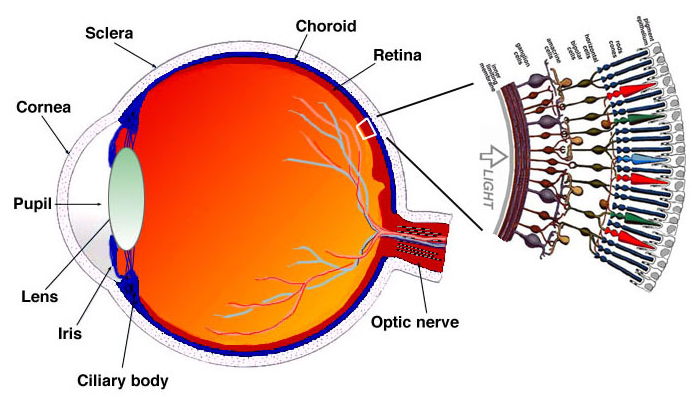Photoreceptors
A photoreceptor cell is an expert type of neuron found in the retina which is capable of phototransduction. The retina is the back part of the eye which contains the cells that react to light. These expert cells are known as photoreceptors. The great biological significance of photoreceptors is that they convert light (i.e., visible electromagnetic radiation) into signals which can stimulate the biological processes. To be more particular, photoreceptor proteins in cell absorb the photons, triggering a change in the cell's membrane potential.
There are two kinds of photoreceptors in the retina viz. rods and cones, each contributing information used by the visual system to form a demonstration of the visual world, sight. The Rods are very much sensitive to light and dark changes, shape and movement and hold only one type of light-sensitive pigment. This illustrates why colors cannot be seen at low light levels. Rods are more than cones in number in the periphery of the retina. There are around 120 million rods in the human retina.

The cones are not much sensitive to light as the rods. Cones need significantly brighter light in order to generate a signal. The signals from cones are sent to the brain which then translates such messages into the perception of color. Though, cones are most sensitive to one of three various colors (i.e., green, red or blue). There are around 6 million cones in the human retina. In humans, there are three various types of cone cell, distinguished by their pattern of response to various wavelengths of light. The color experience is computed from these three distinct signals, perhaps through an opponent process. The three types of cone cell roughly respond to light of short, medium, and long wavelengths.